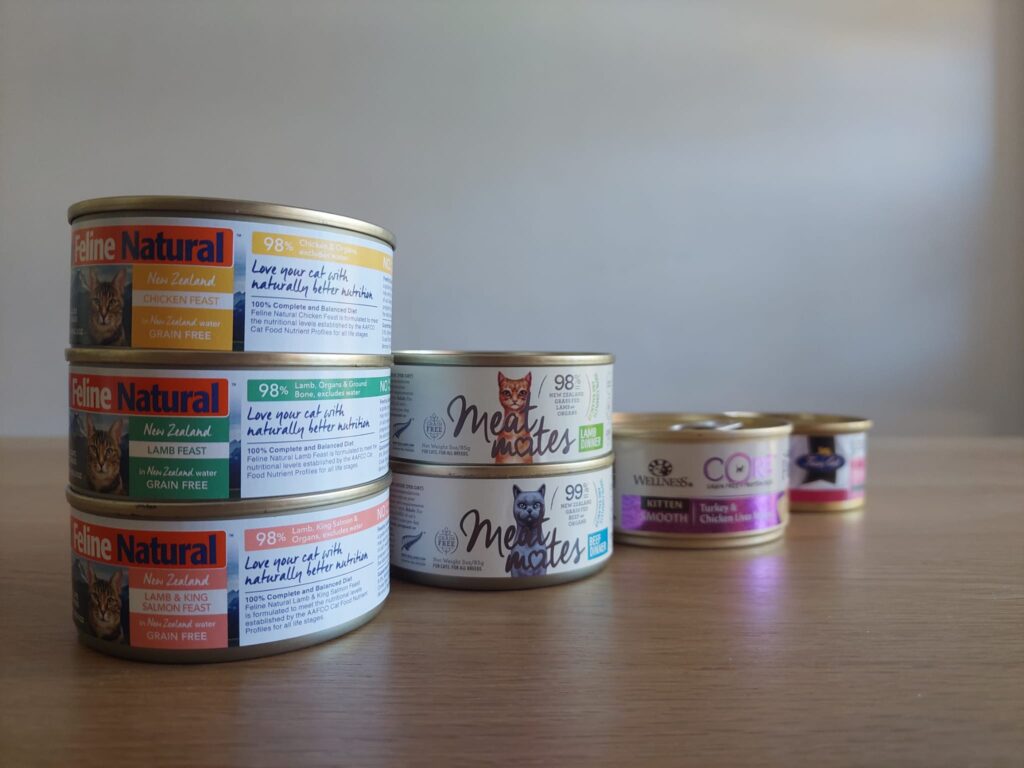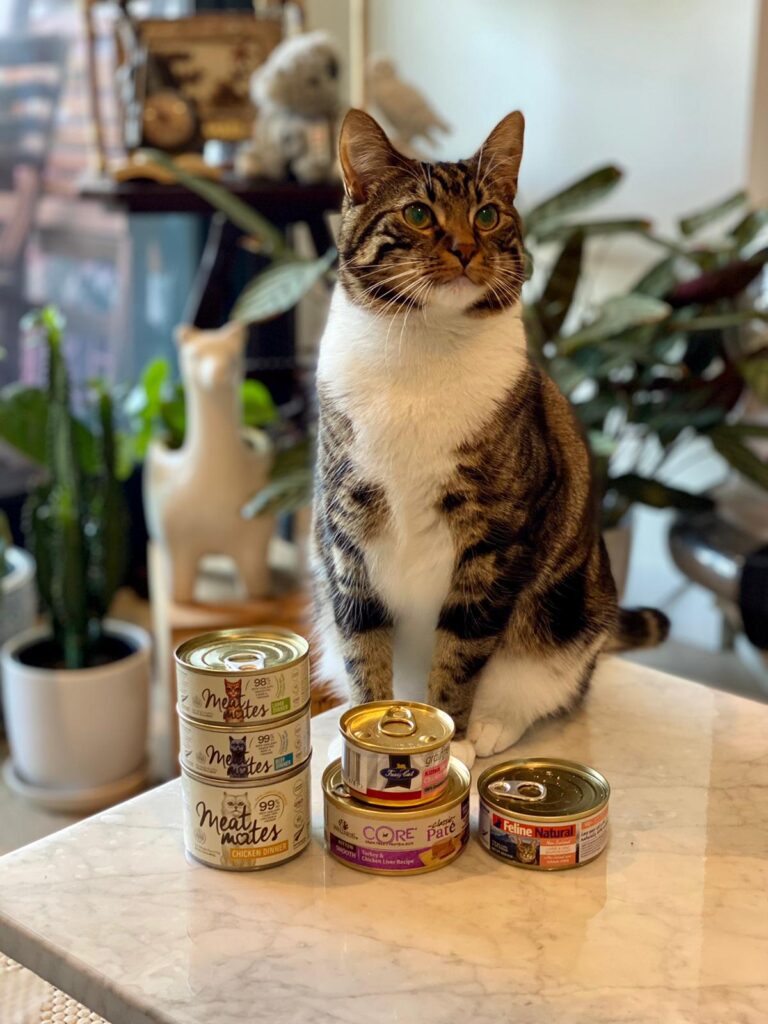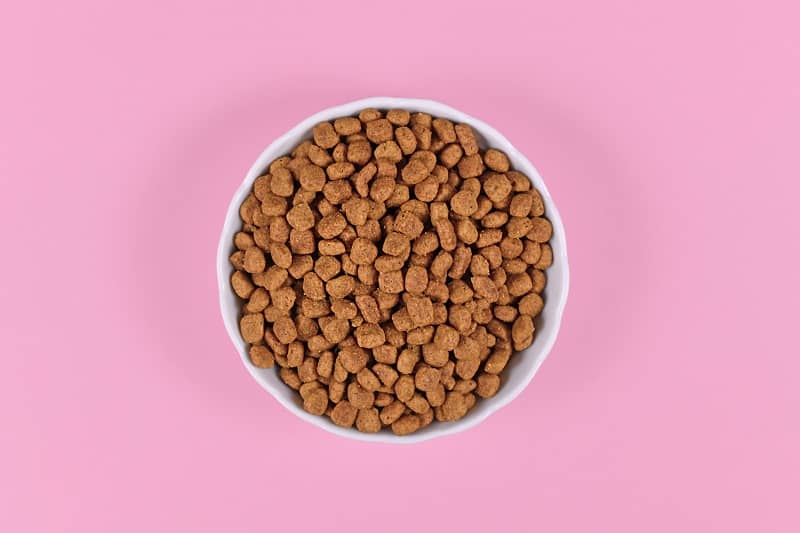Last Updated on March 24, 2024 by Indy the Cat
What is a Rotation Diet?
Before we can discuss why you should consider a rotation diet, we must first discuss what is a rotation diet.
Simply put, a rotation diet is where your cat eats a different food each meal. This could be a variety of wet food, dry food or other foods that can compliment one another.
New owners may feel hesitant to try this for a few reasons. First, there is still the myth that cats should eat the same food day in day out. Other reasons may be that they feel their cat is eating consistently with no issues and hesitant to disturb their routine. Some people may perceive their cat as “fussy”, but do not realize this behaviour is essentially learned through interaction with humans (more on this later).
Nonetheless, we believe that rotation diets can be one of the best routines for your cat. We, as humans appreciate the variety in our foods, and our feline friends can also benefit from a varied diet. If you’re curious about Indy’s rotation diet, have a look at how’s he is fed.
Now that we’ve discussed what is a rotation diet, let’s take a look at our top 5 reasons why you should consider a rotation diet.

1. Avoid being held hostage by pet food companies
Pet food companies design recipes for cats and then go on to make the same food again and again and again. Formulas are generally consistent, but companies are not immune to change, either purposely or by less avoidable means. Sometimes they are forced to change due to uncontrollable factors such as supply chain issues, while other factors such as rising costs or a need to make substitutions (however minor) could alter the food’s original formula.
While often these changes may not affect the general macro nutrients of the end product, cats are particularly sensitive to random change. If your favourite formula suddenly changes and your cat is not used to adapting to other food, you may find yourself in a stressful situation where your cat outright rejects food. If a cat goes an extended period of time without food (more than 24-48 hours), there is potential for liver damage as they begin converting fat reserves to energy. This condition is known as “fatty liver disease” and is susceptible in cats.
By exposing your cat to different foods in a rotation diet early on in their life, you set your cat up to adapt to future diet changes. You are building habits for the present and the future by avoiding a situation where you’re held hostage by a specific pet food brand or recipes.
2. Avoid a fussy cat
Ah the fussy cat. Who hasn’t heard the millions of stories out there about a fussy cat. It’s such a prominent phrase that there’s even a brand called Fussy Cat (and we covered one of their old recipes!). But are cats as fussy as their reputation suggests? Well… sort of. But like most cat things, it’s often the stupid hooman’s fault. Let’s paint a picture!
Jimmy has been feeding his cat Tom the same brand of cat food – Royal Whiskers Chicken – since he adopted Tom at the age of 10 weeks. Everything was going smoothly. The little rascal would gobble up everything until suddenly during month 6, on one beautiful monday aftrnoon, he decided, nah, I don’t feel like eating this food. Jimmy tries again a few hours later and still he refuses. Jimmy panics and goes out to buy a new food and plops this new food down in the bowl. Tom smells it, takes a few bites. “Not bad. I’ll eat some of it” Tom thinks. Jimmy is relieved.
Behold, Jimmy has taken his first steps to turning Tom into a fussy cat. And it doesn’t take Tom long to realize that all he needs to do is turn his nose up to the food to get Jimmy to change things for him.
While it’s true that cats love and thrive with routine, a rotation diet is simply that. A routine with variation at its heart. Instead of your cat expecting the same thing all the time, you build an expectation that their food will change frequently. And that is perfectly OK.
3. More budget friendly!
A rotation diet isn’t only good for the cat, it can be good for your wallet too. Even if you prefer to feed your cat the most expensive premium foods, it’s good to have flexibility. If another brand or flavour is on sale, maybe you can pick that one up instead. If one of the budget brands is available that you want to try, sure, why not!?
Much like not being hostage to a brand’s formulas, by rotating foods, you’re not hostage to prices either. You can buy what is on sale or mix in more premium or budget friendly options as you see fit. After all, as humans, we eat everything from cheaper fast food, to more expensive high end meals. Flexibility can benefit your hard earned dollars and provide a varied diet for your cat!
4. Set up your cat for the future
Cats are brought into our family at various stages of their lives. Some join us as kittens, while others are already adults or seniors. It is undoubtedly easiest to start a rotation diet early in a cat’s life. As kittens, they are much akin to children who should be exposed to different experiences, people and food. And while much is made about the socialization period (2-7 weeks) in a kitten’s life, it’s also important to expose your kitten to new things as they progress to adulthood.
As mentioned earlier, by adding a rotation diet early on in their lives, you build a routine of change. You allow the cat to expect change. New food you want to try? No problem! Your local pet store run out of food and there’s an emergency? No problem! Being confident that your cat can take on new food without hassles is a huge relief for most cat owners.
This can be even more vital as a cat progresses into its senior years and may require diet changes or adjustments if health problems appear. With a rotation diet, we’ve set our cats up for success later in life. Of course, we can also teach adult cats rotation diets too, but the change must be very slow and sometimes it can be hard to break old habits that were introduced as a young cat.
5. Variety is the spice of life for cats too!
Jackson Galaxy recommends we build the 3 R’s – routine, ritual and rhythm for our cats. But routine doesn’t mean exactly the same thing each time. When we exercise, we don’t do the exact same exercise every time. When we eat, we do not eat the same thing every time.
When cats eat the same thing day in day out, they can get bored. Building a rotation diet makes mealtime interesting for your cats. They may still have a preferred brand or flavour, but if today’s menu isn’t their favourite, tomorrow is a new day and they know meals change frequently.
There is a secondary benefit to variety in a cat’s diet in that, while many cat foods are intended to be complete and balanced, all formulas have varying ingredients and nutrient levels. By feeding a varied diet, we are less likely to be deficient in any one area due to a “law of averages”.
Variety is the spice of life for humans. We can do the same for our cat’s diet: different proteins, textures and flavours! Indy loves his rotation diet and we know that yours would too!
Have we changed your mind on trying a rotation diet? Ready to get started?
Stay tuned for part 2 on our rotation diet series! Don’t miss it by subscribing to new articles below!
If you spot an error in this article, please do not hesitate to let us know!



Pingback: How to develop a Rotation Diet for your Cat
Pingback: Blackcat Kangeroo Delites: The Best Cat Food Reviews (2022) - indyreviewscatfood.com
Pingback: Meat Mates Beef – The Best Cat Food Reviews (2022)
Pingback: How to Feed Kittens – 5 Best Feeding Tips for Kitten -